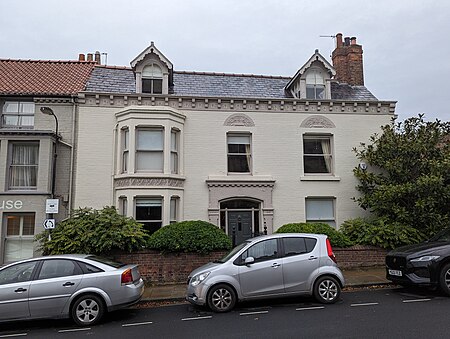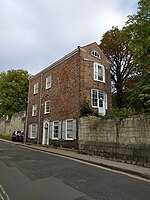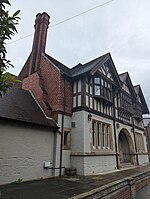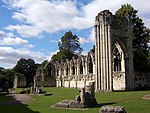St Olave's House

St Olave's House is a historic building on Marygate, immediately north of the city centre of York in England. The building's origins lie in the early 17th century, but the oldest parts of the current building date from the later part of the century. In the late 18th century, a separate building was erected behind the left-hand part of the building, which in the early 19th century was joined to St Olave's House, and incorporated into the building, with a chimney and bay window added. In about 1900, the front to Marygate was rebuilt. The house was Grade II listed in 1997. It was sold for £1,450,000 in 2019, for £2,250,000 in 2021, and placed on the market for £2.75 million in 2023. At the time, it was marketed as "York's best address", with an unusually large plot for its location, six bedrooms, and a walled garden.The house is built of brick, painted at the front, with the front roof being slate while the other roofs are pantile. It is of two storeys, with an attic, the front having a shallow porch, a two-storey bay window to the left, timber eaves with ceramic tiles depicted rosettes with leaves, and two dormer windows. The back of the north wing has an original gable, with a single-storey modern extension in front. Inside, most fittings are from the 18th and 19th centuries. The front right room includes part of the original fireplace, and the attic staircase is late 17th century, probably originally having been the main staircase.A two-storey octagonal gazebo lies north-west of the house, originally in its garden, but now in the garden of 6 Marygate Lane. It was built in the mid 19th century of Magnesian Limestone, with a slate roof and timber finial. The windows were replaced in the 20th century, and it was Grade II listed in 1983.
Excerpt from the Wikipedia article St Olave's House (License: CC BY-SA 3.0, Authors, Images).St Olave's House
Marygate, York Bishophill
Geographical coordinates (GPS) Address Nearby Places Show on map
Geographical coordinates (GPS)
| Latitude | Longitude |
|---|---|
| N 53.96247 ° | E -1.08951 ° |
Address
Marygate
Marygate
YO30 7BH York, Bishophill
England, United Kingdom
Open on Google Maps











